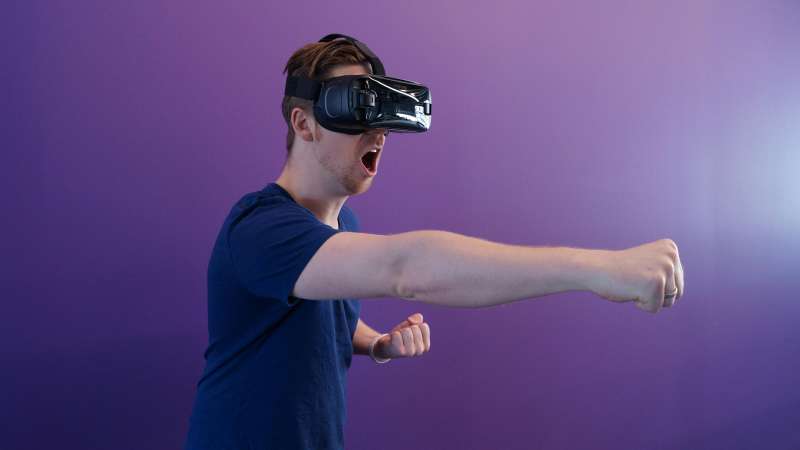Virtual and Augmented Reality: New Horizons for Learning and Entertainment
Published on: April 26, 2025
Virtual Reality (VR) and Augmented Reality (AR) are transforming the way we interact with the digital world. By merging real and virtual environments, these immersive technologies offer entirely new dimensions in how we learn, work, and play. While once limited to science fiction or high-end labs, VR and AR are now entering mainstream industries — from education and healthcare to gaming, tourism, and remote collaboration.
These technologies not only redefine what’s possible in training and entertainment but also challenge us to reimagine the boundaries of physical experience in a digitally enhanced world.
Understanding VR and AR
-
Virtual Reality (VR) immerses users in a fully digital environment, typically experienced through a headset like the Oculus Quest or HTC Vive. The user is “transported” into a simulated space — whether it’s a classroom, a game world, or a factory floor.
-
Augmented Reality (AR) overlays digital elements (images, animations, or information) onto the real world using devices like smartphones, AR glasses, or tablets. Think Pokémon GO, IKEA Place, or Google Lens.
A third related concept is Mixed Reality (MR), which combines both worlds in real-time interaction, blending physical and digital elements in dynamic ways.
Revolutionizing Learning and Development
1. Immersive Education and Training
VR and AR are radically improving how people learn new skills or acquire complex knowledge. Instead of passive instruction through reading or watching, learners can now actively engage with content in a three-dimensional environment.
-
Medical Training: VR is used to simulate surgeries, allowing students and doctors to practice procedures without risk. Platforms like Osso VR and FundamentalVR offer realistic tactile feedback and lifelike scenarios.
-
Technical and Safety Training: Workers in fields like manufacturing, construction, and aviation benefit from AR-assisted manuals or VR-based simulations that teach procedures, highlight safety protocols, and improve retention.
-
Classroom Learning: Applications like Google Expeditions or ClassVR let students take virtual field trips to historical sites or explore complex scientific concepts in 3D — increasing engagement and memory retention.
-
Corporate Learning: Companies use VR to onboard new employees, simulate difficult conversations, or deliver diversity and inclusion training. AR can assist in real-time knowledge delivery on the job.
2. Accessibility and Inclusion
AR and VR can level the playing field in education by providing personalized, multisensory experiences. For students with learning difficulties, gamified environments or interactive simulations offer alternative ways to absorb content. Visual and spatial learners, in particular, benefit from immersive representations.
The Entertainment Evolution
Entertainment is one of the earliest and most popular applications of VR and AR, constantly pushing the envelope of what’s possible in digital storytelling and interactivity.
1. Gaming: Immersive and Interactive
VR has revolutionized gaming by turning the player into an active participant within the game world. Titles like Beat Saber, Half-Life: Alyx, and The Walking Dead: Saints & Sinners demonstrate how physical movement and spatial interaction can heighten engagement.
AR games like Pokémon GO, Harry Potter: Wizards Unite, or Minecraft Earth blend the real and virtual worlds, encouraging exploration and social interaction in the physical environment.
2. Virtual Concerts and Events
Artists and entertainers are embracing virtual platforms to reach global audiences. VR concerts on platforms like Wave or Roblox allow fans to attend performances in fantastical, interactive environments. These experiences are redefining the concept of live entertainment.
During the COVID-19 pandemic, many conferences and festivals shifted to VR platforms like AltspaceVR or VRChat, proving that immersive events can foster meaningful interaction — even without physical presence.
3. Cinematic and 360° Storytelling
VR film-making and 360° videos allow viewers to become part of the story, not just spectators. Directors can guide audience attention through spatial audio, narrative cues, or environmental triggers. Studios like Within, Baobab Studios, and Felix & Paul are leading in VR storytelling innovation.
Blending Real and Digital in Daily Life
AR is increasingly present in everyday tasks:
-
Retail and E-commerce: Apps from IKEA, Sephora, and L’Oreal let customers visualize furniture or try on makeup using AR.
-
Navigation and Travel: AR-based apps like Google Maps Live View overlay directional arrows onto the real world.
-
Tourism: Museums and cities use AR guides to provide historical context or animations at cultural sites.
These applications not only entertain but also enrich real-world experiences, making information more accessible and engaging.
Collaborative Work and Remote Assistance
As remote and hybrid work becomes more common, VR and AR are being adopted for:
-
Virtual Meetings: Platforms like Spatial or Horizon Workrooms create shared virtual spaces where remote workers can meet as avatars, share content, and collaborate in 3D.
-
Remote Support: AR tools allow experts to provide real-time instructions through a user’s camera feed — useful in fields like field service, machinery repair, and medical diagnostics.
Such use cases improve workforce management by facilitating knowledge sharing, reducing travel costs, and improving efficiency.
Challenges to Widespread Adoption
Despite their promise, VR and AR face several hurdles:
-
Hardware Costs: Quality headsets and AR glasses can be expensive, limiting access for some institutions and users.
-
Content Development: Creating high-quality immersive content requires expertise, time, and investment.
-
Motion Sickness: Some users experience discomfort when using VR for extended periods.
-
Privacy and Data Security: AR and VR collect large amounts of personal and spatial data, raising concerns over surveillance and misuse.
The Future: Toward the Metaverse and Beyond
As technology advances, the boundaries between physical and digital realities continue to blur. The rise of the metaverse — a collective virtual space where people socialize, work, and create — builds heavily on AR and VR technologies.
Companies like Meta, Apple, and Microsoft are investing billions into devices and platforms that enable persistent, immersive environments. Apple's Vision Pro, for example, combines spatial computing with intuitive hand-tracking and eye control — signaling a new era of immersive interfaces.
Meanwhile, developers are integrating AI to enhance realism, personalization, and interactivity in VR/AR environments.
Immersive Innovation with Real-World Impact
Virtual and Augmented Reality technologies are no longer confined to niche applications — they are reshaping how we experience the world. From improving how we learn and work to enhancing how we play and connect, VR and AR are opening entirely new horizons.
As the tools become more accessible and content more compelling, the future will not be limited to screens. It will be immersive, interactive, and seamlessly integrated into our daily lives — transforming not only how we see the world but how we engage with it.










